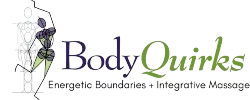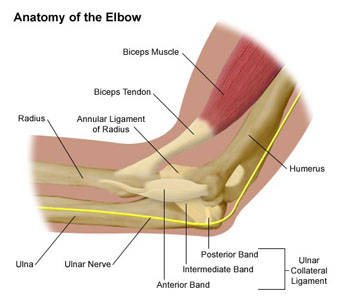As we make our way down the body from the head, neck and jaw we come to the shoulders — one of the body’s true workhorses. Bridging the gap between the head/neck and arms, the shoulders often “shoulder,” much of the burden when it comes to the needs placed on our bodies by the electronic world, especially from laptops which some physicians say are crippling us.
Besides the obvious tension, knots and discomfort radiating in and around our shoulder regions, headaches, too, often stem from this tightness in the neck and shoulder muscles. Work in front of computer terminals with arms too close in to the body and the neck displaced for long periods of time can cause tremendous strain on these muscle groups, shortening muscles, causing chronic pain and shifting posture. If you’ve ever felt that your shoulders were creeping up higher and higher, shifting upwards towards your ears, then you’ve experienced the type of structural compromise caused by wear and tear on this muscle group.

Tension in the neck translates readily to the head, since the neck’s function is very specialized. The neck is one area in the body where a single muscle does more than one function, unlike most other areas of the body, where muscles have one primary function. In your neck, most muscles work in conjunction with one another to move the head in both directions.
The truth is, if you stretch your neck only in one direction, you are only stretching half of each muscle. The spine and spinal cord are housed in the neck, as well as the trachea, the esophagus and the thyroid. Tightness of neck muscles can change your voice tone and pitch, make swallowing hard, and even breathing can be affected. There are so many different structures passing through this narrow area of the body, and on top of that you have the big blood vessels that feed the brain and head, and nerves exiting the spine and innervating the neck, face, chest and arms. Once you think about the number of structures living there, you begin to understand why things like whiplash have such long-reaching consequences, and can incapacitate a person.
 Intimately tied to the structure of the neck is the shoulder area, and they tend to really influence each other’s effectiveness. The shoulder is the most versatile joint that we have, in order to achieve this versatility, it is not locked down in a deep protective socket. As a consequence of this versatility, the shoulder joint then becomes more vulnerable, one in which the muscles, not the cartilage and bones, work together to keep it in place, trading mobility for stability.
Intimately tied to the structure of the neck is the shoulder area, and they tend to really influence each other’s effectiveness. The shoulder is the most versatile joint that we have, in order to achieve this versatility, it is not locked down in a deep protective socket. As a consequence of this versatility, the shoulder joint then becomes more vulnerable, one in which the muscles, not the cartilage and bones, work together to keep it in place, trading mobility for stability.
Any injury to the muscles that form the “shoulder cuff” will affect the function, not only of the shoulder and neck, but also of the arm and hand. This is an area that really makes the interconnectedness of the different parts obvious.

Have you ever been working out at the gym and heard a popping sound in your shoulder? Or playing football or some other contact sport fallen down, landing on your shoulder? Or maybe you were playing tennis, when all of a sudden there was a sharp pain in your shoulder.These are all signs of the same thing — a rotator cuff injury. Whether you want to call it a rotator cuff tear or shoulder tendonitis, it’s really all the same. A tear, strain or inflammation in the rotator cuff muscles and tendons.
Like any other muscle injury, massage can be used to effectively help the treatment and healing of the affected tissues. Whether it’s muscle tension, shortening or injury translating into the pain or tightness in your shoulders, we can help. Give us call today.
Related Articles
- Shoulder pain – All Information (umm.edu)



